The Beginning of Contemporary Art
Contemporary art" has become a common sight in recent years.
Not only in museums and galleries designed to display works of art, contemporary art works can be seen in various places around town.
But what exactly does "contemporary art" mean? Which period is the "contemporary" referred to by the term "modern art"?
In this issue, we will answer these questions.
The best way to understand art is to know the specific artists and their works. Here are 10 figures who can help you understand a little more about "contemporary art," which is often said to be unfamiliar.
Famous Contemporary Artists of the 20th Century, 1910 - 50s
1) Marcel Duchamp
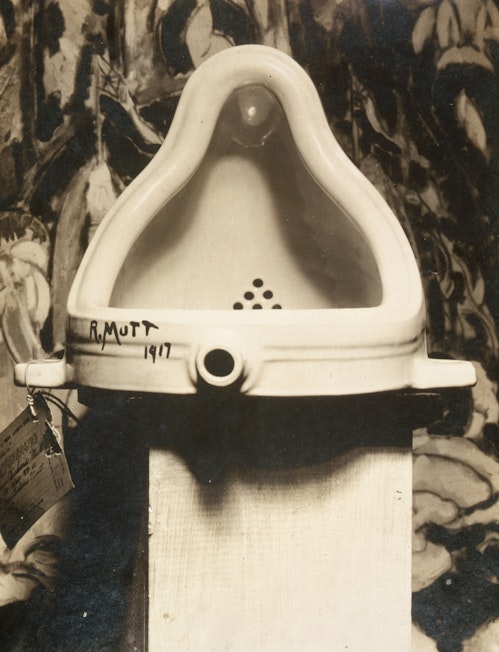
Fountain 1917
Marcel Duchamp is most often mentioned as the founder of modern art in the sense that it is fundamentally different from the art of the past. You may recognize his "Fountain," a work in which he simply turned a male urinal upside down and wrote his signature on it.
You may have an image of art as something that you can intuitively feel "beautiful," "fun," or "wonderful" before you even think about it.
However, what Duchamp was showing with "Fountain" was to criticize such conventional image and to present a new "art.

Duchamp categorized art in the conventional sense as "retinal painting. The definition of art was that it could be enjoyed on the retina, in that it was complete and pleasurable only to the visual stimulus.
Duchamp, on the other hand, defined his work as something that "can be enjoyed with the mind.
The male urinal itself does not possess beauty, mastery of craftsmanship, or mystery. He says that the act of "art" is only established when something that has no value retinotopically is presented as a "work of art" or "art" and is appreciated by the viewer, i.e., by human thought.
This shift in perspective means that we must abandon the passive attitude that "something inherently beautiful is art," and instead ask, "What meaning or background does this have? and to confront the work with an active attitude that probes deep into the work, asking, "What is the meaning and background of this?
This process is not always enjoyable, and not everyone is able to appreciate a work in such a desirable manner.
Duchamp's approach was to accept even this as a precondition, and to consider all the elements involved in the act of appreciation, such as the work, the artist's background, and the conditions and background of the viewer at the time, as essential elements in the formation of a "work of art.
Duchamp succeeded in vividly presenting this fundamental attitude, and this spirit has been passed on to most contemporary artists working today.
(2) Pablo Picasso
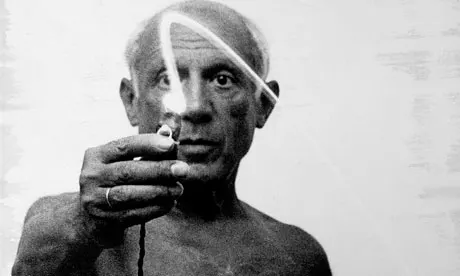
Pablo Picasso is another historical artist loved by many.
A famous anecdote is that the first word he spoke was "Lapiz," which means "pencil" in Spanish.
Although Picasso made his name as a precocious genius, he is also widely known for revolutionizing Western art.
He created an art movement called "Cubism.
In the perspective method, which characterizes Western art, there is a clear rule that there is a vanishing point on the horizontal line centered on the artist's eye, and as the object moves away from the viewpoint, the entire landscape is concentrated on the vanishing point. This method was used to accurately express the fact that large geometric objects, such as buildings, seem to shrink as they move away from the viewer.
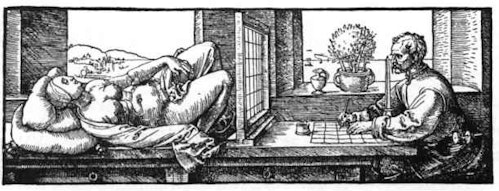
However, under the influence of Paul Cézanne and others, Picasso rebelled against such a uniform way of perceiving space.
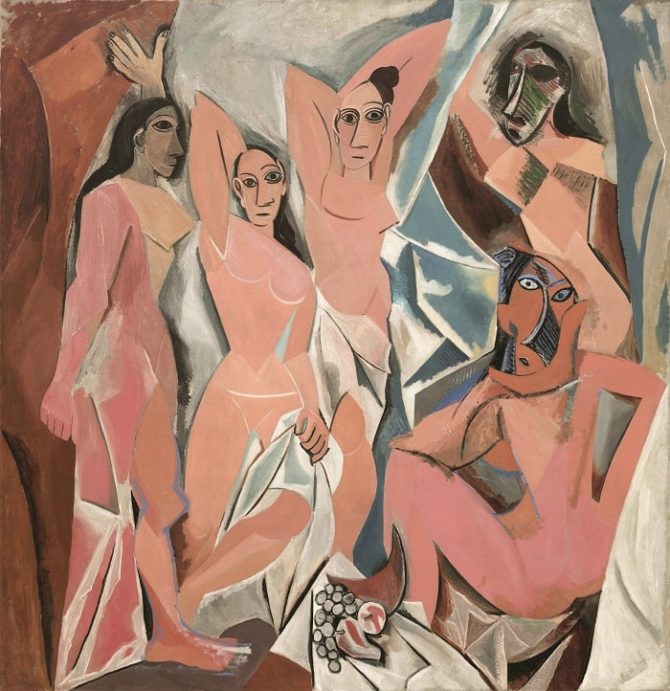
Daughters of Avignon 1907
The figures have unique facial expressions that are strongly influenced by the combination of parts of the physical form when viewed from various angles and the molding of masks and clay figures found in ancient African art.
How do we perceive reality? Picasso succeeded in answering this question in a unique and vivid way.
Even when depicting nudes, rather than appealing to the erotic as in the past, the effect is to draw the viewer's attention to the space itself, to the very act of representing three dimensions in two dimensions.
(3) Henri Matisse
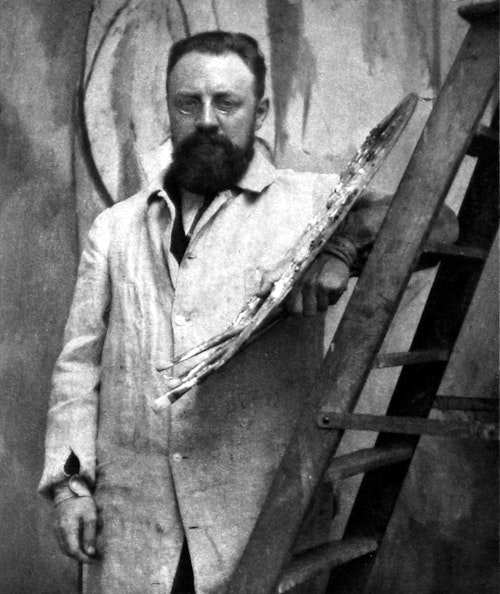
Matisse, also known as the "Magician of Color," is one of the most famous painters of the 20th century.
If Picasso revolutionized the expression of form, Matisse liberated the expression of color from reality. He had the awareness that drawing should be based on color, not form.
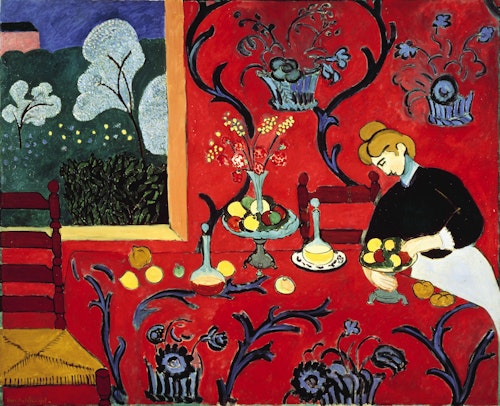
Red Harmony, 1908
This work is often regarded as Matisse's masterpiece. Bold and vivid red is the main color, and the blue arabesque pattern, which is the pattern of wallpaper and tablecloths, is depicted with a greater presence than as a pattern.
The effect is as if the space in terms of depth has disappeared and only the flat colors are visible.
In addition to oil paintings, he actively produced cutouts, and in his later years, he frequently produced cutouts.
Column -Differences from Non-Contemporary Art
Contemporary art is clearly distinguished from "modern art," which refers to the period category immediately preceding it.
The term "modern" generally refers to the period of capitalist and civil society after the feudalistic era and the Middle Ages, i.e., the era of "individualism" and "democracy.
Modernism refers to a stance that takes a position of respect for the rights and freedoms of the individual vis-à-vis the authority of the state and society. In art, too, modernity was characterized by a value placed on freedom and individuality.
In contrast, modern art, which began to emerge around the 1960s, stands on the premise of "enjoying the concept" created by Duchamp. Therefore, while there are of course many works that are interesting to the eye and enjoyable to the senses, it is probably best to think of the major works as those that can be understood more deeply with knowledge of the artist and the ideas that form the premise for the creation of the work.
In the 21st century, styles have become more and more individualized, with the majority of artists rejecting the easy-to-understand categorization of a particular art movement as they once did.
Prominent Contemporary Artists of the 20th Century, 1960s - 1990s
(iv) Jackson Pollock.
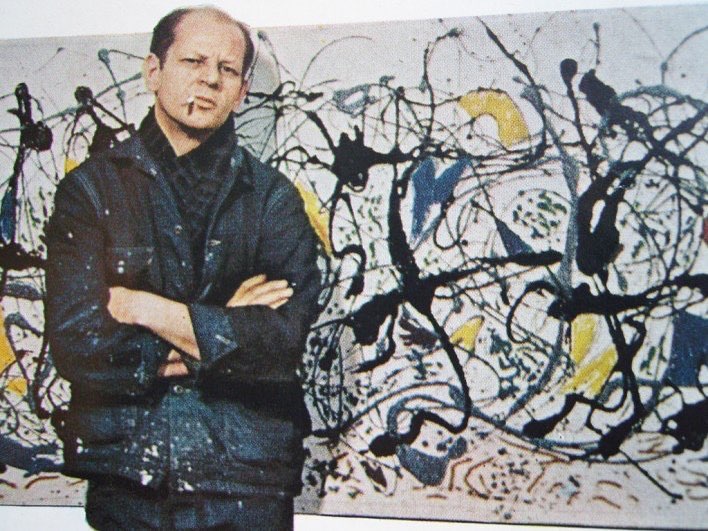
Jackson Pollock is a representative of Abstract Expressionism and one of the most famous artists in postwar American art.
He was one of the most famous American artists of the postwar era, and his spectacular life, which ended with his death when the car he was driving crashed into a telephone pole while he was addicted to alcohol, defined the image of the artist as a "rebellious, roughneck".
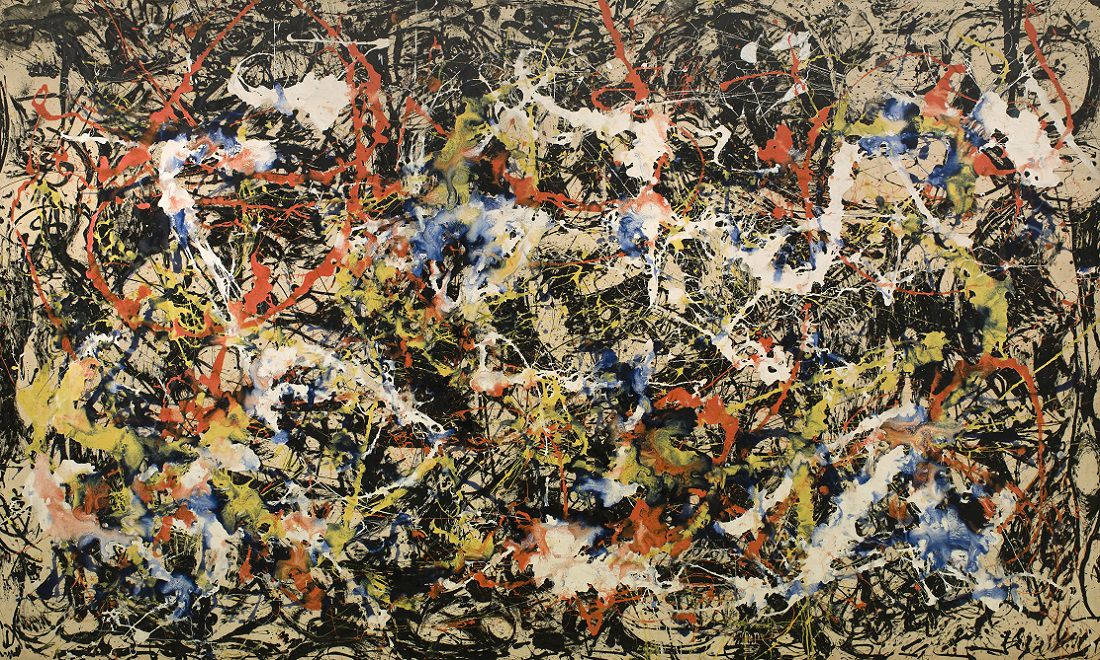
Convergence, 1952
Pollock is best known for developing a new method of production called "action painting.
Canvases are usually placed perpendicular to the ground on easels, which are usually used for painting. However, Pollock painted by laying the canvas on the floor and sprinkling paint on it without using a brush, or drip painting.
It can be said that he painted the entire canvas with an even amount of heat, i.e., he painted in an all-over style. Pollock's revolution was also to make the depth disappear from the picture plane, so that the entire surface of the picture plane would stand up as a "painting.
He emphasized the process of painting, or action, rather than the finished result.
5) Andy Warhol
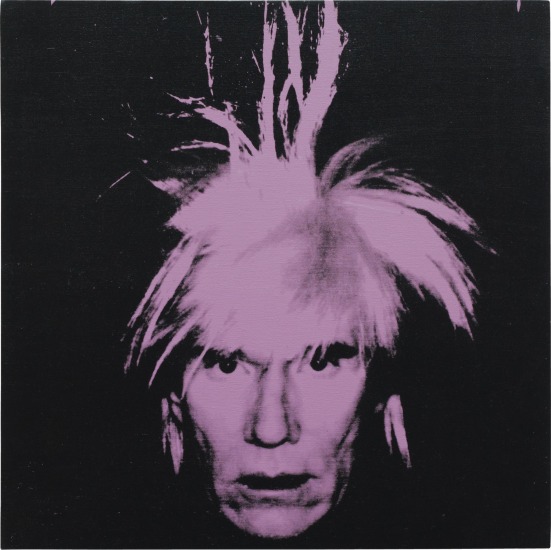
Warhol initially worked as an illustrator for picture books and advertisements.
In his 30s, he began creating art works using mass-produced and copied objects such as Campbell's soup cans and dollar bills as motifs. Although initially harshly criticized for his deliberate treatment of mass culture and mass consumerism, his work was gradually recognized as a new art form, "pop art," and he created a spectacular image alongside pop stars in the music and film industries.

Warhol said, "If you want to know everything, just look at the surface. Warhol was thorough in producing himself, both in appearance and in the sense that his work had no deeper meaning and was all about what he saw.
He also created his own studio, "Factory.
The Factory was created with the intention of efficiently producing his work, much like a factory, and he invited a wide range of people to mingle with him, from celebrities and corner-corners to vagabonds.
The Factory was also known as "The Silver Factory" because the entire interior was covered in silver. Warhol employed art workers, known as "art workers," who created many masterpieces.
This factory-like process was actually not Warhol's first, but rather has long been a common sight in Europe. Major pre-modern painters such as Titian and Rubens also ran their own workshops and hired a large number of apprentices, minimizing their own workload to produce large quantities of high-quality work.
6) Cindy Sherman.
Her best-known work is "Untitled Film Stills," a series of photographs in which she poses as actresses in popular movie scenes from the 1950s.
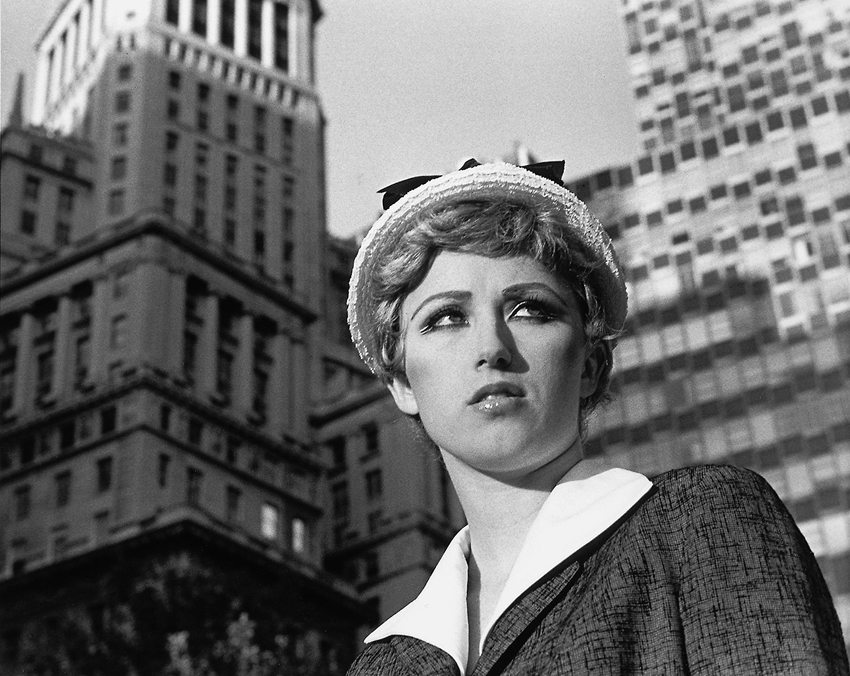
As a student, Sherman had been making paintings in a super-realist style, but he began to use photography as his medium, partly as a result of his interactions with artists such as Adrian Piper, whose work is based on photographic expression.
He began to use photography as a medium for his own work, in particular the series "Bus Riders," in which he photographs himself as various passengers on a bus, and "Untitled Film Stills," a series of advertisement photographs and movie scenes created on movie sets.
Sherman wears vintage clothing and wigs and dresses as various women. According to Sherman, she was inspired by the stereotypical female roles in Hollywood films of the 1950s and 1960s, noir films, B-movies, and Italian avant-garde films.

(vii) Joseph Beuys.
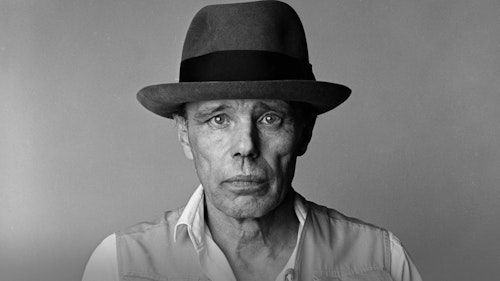
Joseph Beuys is famous for his sculptures made of fat and felt, actions, and dialogue meetings, as well as his interventions in political and environmental issues.
Calling his practice "social sculpture," he has expanded his activities beyond the traditional categories of art.
He has been interested in nature and animals since childhood, and chose to use them as materials for his work after being wounded in the military when he was in his early 20s and having his wounds treated with fat and felt by the local Tatars.

As a core member of the Fluxus art group, he created various action pieces, including one in which Beuys, his head covered in gold leaf and honey, holds a dead rabbit in his arms and lets it touch his painting, another in which Beuys is taken by ambulance from the airport where he arrived in the U.S. to a gallery with coyotes, where he lives for a week before leaving for Germany again, and a third in which he is taken to the U.S. to work on a painting of the "Coyote's Cage. By emphasizing only the action with the coyote, he criticized the oppression of Native Americans by American society.
Notable contemporary artists still living
(8) Anish Kapoor
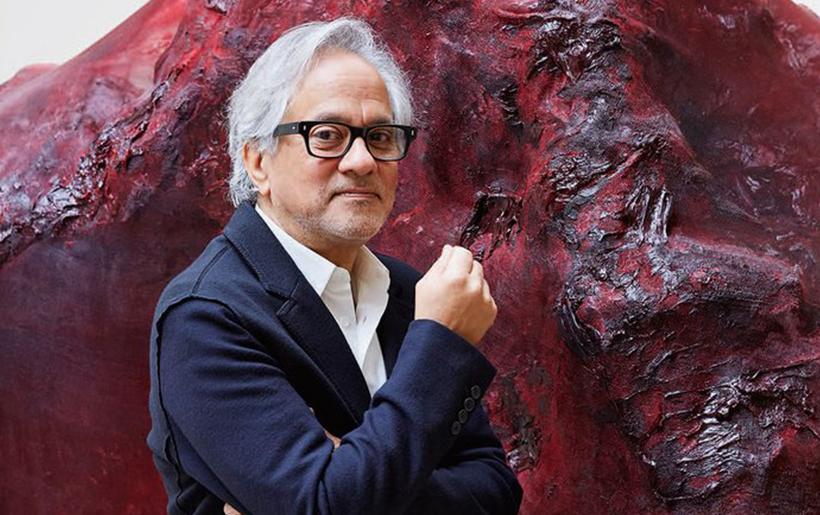
Kapoor is a British contemporary artist born in Mumbai, India.
His philosophical and tactile works, which make viewers think intuitively about color, light, perception, and space, are highly acclaimed worldwide.
Painted with paint called "Benta Black," the blackest substance in the world, this three-dimensional work has no visible bulges or concavities. In this work, the viewer and the landscape behind him are projected in a strange, distorted manner onto a giant concave mirror. A grotesque red mass that looks like entrails or flesh and blood is shot out with a cannon in a completely white room.
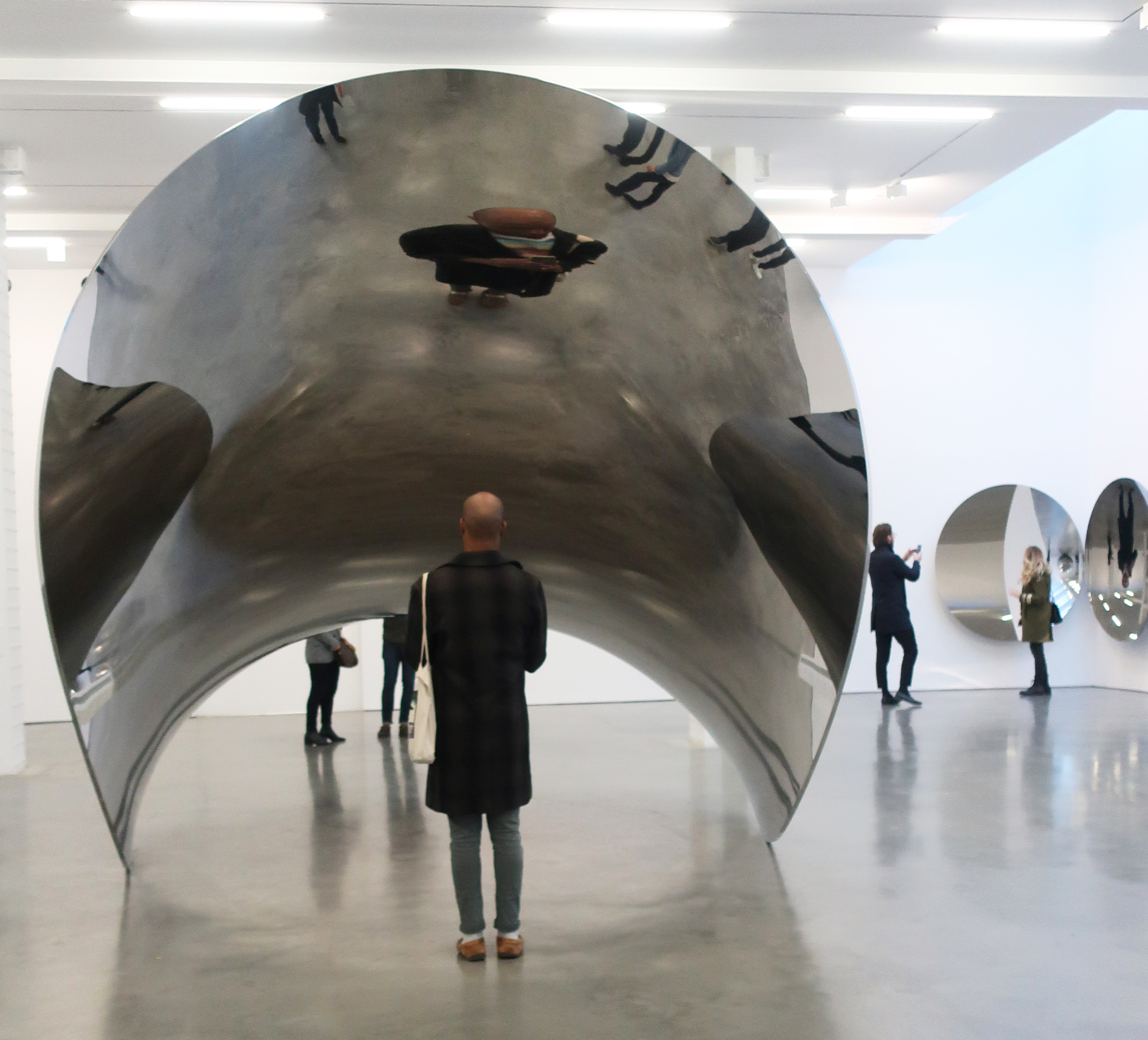
Each piece is shrouded in mystery at first glance, yet symbolically expresses his unique perspective through installation works that use the entire space to intervene in the human visual experience and the foundations of the senses.
(ix) Yayoi Kusama
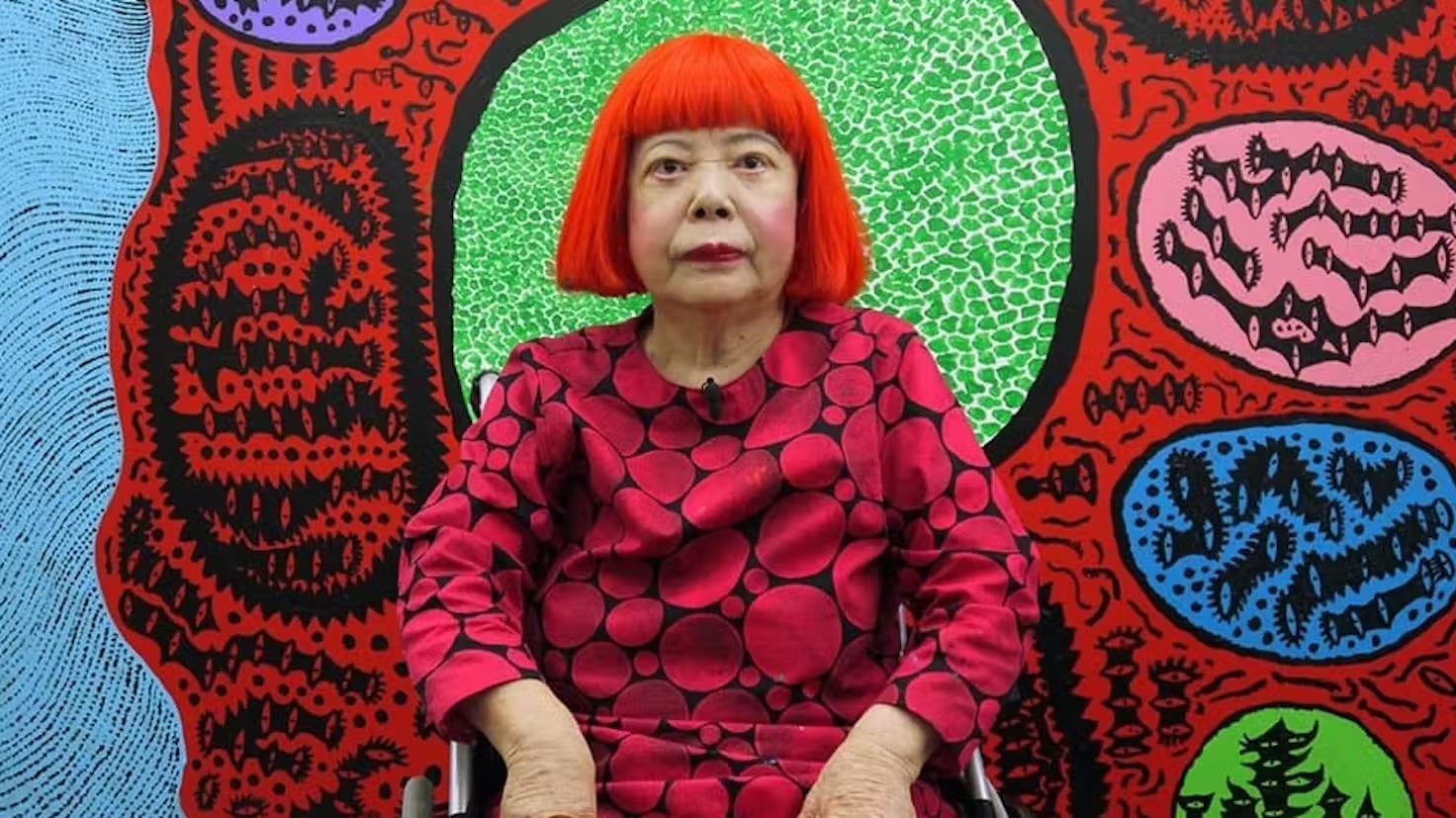
Yayoi Kusama has become the world's most successful female artist in recent years.
In 2019, her work reportedly accounted for 25% of the market in all auction sales of art created by women.
Kusama's innovation lies in her paranoid art-making and her ability to transcend media to include performances and entire rooms as works of art.
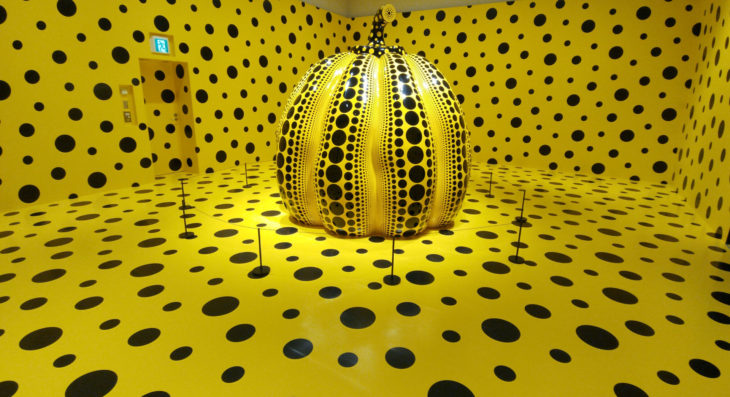
Her iconic pumpkin and polka dot motifs have now become popular in everyday life in a variety of designs. However, they were originally a collection of simple pointillism with the awesome expression of a human being suffering from psychotic tendencies.
Her work is similar to Pollock's in a sense, in that all of the value is not concentrated in the final product itself, but rather in the process of creating it, and the paintings and performance pieces are recognized as an expression of the unique humanity of Yayoi Kusama, who was compelled to paint them.
(10) Bruce Nauman

Bruce Nauman is one of America's leading conceptual artists.
He has created many works that invite philosophical contemplation in any medium, including works that present radical language through neon tubes, video works that are formed by cutting, pasting, and repeating human movement, and works in which voices intersect in a room through speakers that read poetic phrases aloud.
In 2009, Nauman represented the United States at the Venice Biennale, an international exhibition often referred to as the Olympics of the art world, where he was awarded the Golden Lion, the most prestigious award in the world.
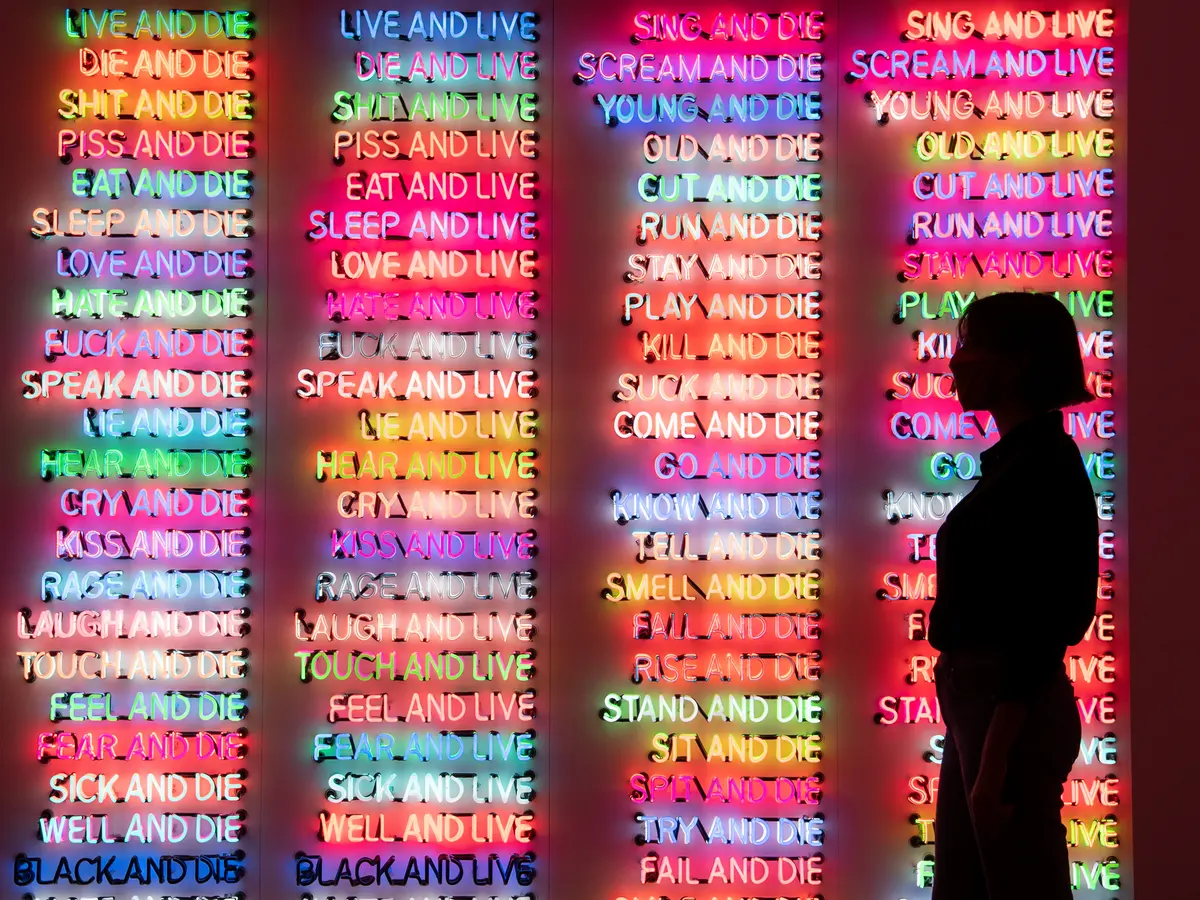
Nauman's work was greatly influenced by the work of Ludwig Wittgenstein, one of the leading philosophers of the 20th century, in his "Philosophical Investigations.
In this work, he calls the overall communication through language that we operate on a daily basis a "language game," and his fragmentary and proverbial writings are centered on the concept that only language, or the way in which the game is operated, determines its rules, i.e., the meaning of words.
Nauman deviates from this everyday way of operating by cutting out, enlarging, repeating and emphasizing a piece of human movement and language. We, the viewers, are asked to consider new meanings of action and language that are (or so the viewer might think) created for the first time by what Nauman has done.
Conclusion
What do you think? One thing is for sure: the unknown and esoteric field of "contemporary art" is an aggregate of individual artists and their works.
It is impossible to understand the whole of art at once, but by trying to interpret each individual work in one's own way, one can gain a better understanding of art.
The following articles on contemporary art are also recommended.
10 Famous Japanese Contemporary Artists and the Attractiveness of Notable Young Artists
10 Japanese Women Contemporary Artists to Watch Now [2023 Edition
Yayoi Kusama's Mirror Room - Explanation of the famous contemporary artist's masterpieces
Who is Yoshitomo Nara? Famous Japanese Contemporary Artists Explained
100 Artists for Understanding Contemporary Art: Domestic Artists (1)
100 Artists for Understanding Contemporary Art - Domestic Artists (2)
100 People for Understanding Contemporary Art: Domestic Gallerists (1)
100 Artists for Understanding Contemporary Art: Domestic Gallerists (2)
100 People for Understanding Contemporary Art Domestic Curators/Critics (1)
100 People for Understanding Contemporary Art: Domestic Curators and Critics (2)
100 People for Understanding Contemporary Art: Overseas Artists (1)
100 Artists for Understanding Contemporary Art: Overseas Artists (2)
Introducing 10 famous overseas painters who are hot right now! Contemporary Art
TRiCERA ART members enjoy a variety of benefits and priorities.
- Discounts such as members-only secret sales and coupons
- Create My Collection by registering your favorite artists
- Receive updates on popular artists, exhibitions, and events
- Receive a weekly newsletter with selected art
- Personal Assessment to find out what kind of art you like.
Please register as a member for free and receive the latest information.
Free Member Registration